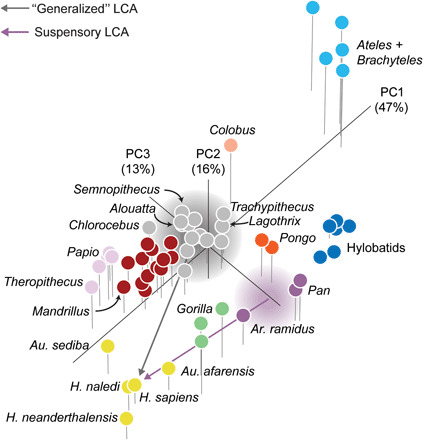Fig. 1. PCA on 26 logged geometric mean-standardized variables representing between-species variation in hand shape.

Each point is a species mean, except among fossil hominins, and colors represent selective regimes identified by SURFACE. Homo and Australopithecus, gold; Ar. ramidus, P. troglodytes, and P. paniscus, purple; G. gorilla, Gorilla beringei beringei, and Gorilla beringei graueri, light green; Pongo pygmaeus and Pongo abelii, orange; Hylobates, Hoolock, Nomascus, and Symphalangus, blue; Macaca, Mandrillus, Cercocebus, Cebus, and Saimiri, dark red; Papio and Theropithecus, pink; Ateles and Brachyteles, light blue; Colobus, tan; remaining platyrrhines, cercopithecins, and colobines, gray. Note that most cercopithecoids and platyrrhines fall along a spectrum of generalized palmigrady to specialized digitigrady. The Ar. ramidus and Au. afarensis hands fall nearest to a hypothetical evolutionary trajectory from a suspensory, Pan-like ancestor instead of a more generalized, monkey-like ancestor. Purple and gray clouds represent hypothetical uncertainties surrounding suspensory Pan-like and generalized ancestral morphotypes, respectively.
